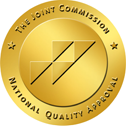Content review by Derek Wilksen, CEO
Addiction is a complex substance use disorder (SUD) that changes the brain in fundamental ways. Unfortunately, many of us will experience addiction throughout our lives either indirectly through our friends, families or other loved ones or directly through our own experience.
Research shows that nearly 47% of the United States adult population struggles with maladaptive signs of an addictive disorder. For this reason, it is essential to become educated on addiction and understand what factors play a role in the development of the condition.
Further, various terms are often used interchangeably to describe addiction, such as drug use, misuse and abuse. However, these terms all define different things, and understanding the difference can help break down barriers and lead to proper treatment paths. The language that we use to talk about addiction matters, which is why we must educate others on the proper use of terms.
Risk Factors for Drug Use and Addiction
There are many reasons people use drugs. For example, some people use them to feel good or to feel better, while others use them to do better or ease social pressures. Some people may need prescription medications to function normally in their daily life, though this is not typically the area of concern for drug use. Rather, the main concern is for individuals who use drugs to ease curiosity, cope with stress or because they are dependent on their recreational substance to function.
Many known risk factors can increase an individual’s susceptibility to developing SUD. In general, there are three main categories of risk factors: genetic, environmental and drug-specific.
#1 Genetic Risk Factors
Risk factors can be passed down through family genetics. For addiction, genetic risk factors may include:
- Parents or siblings who struggle with their mental health or substance use
- The presence of untreated mental health problems in the family tree
#2 Environmental Risk Factors
Risk factors that surface life experience and exposure are also major influencers of SUD. For addiction, environmental risk factors may include:
- Child abuse or maltreatment
- Inadequate parental supervision
- Family poverty
- Community violence
- Favorable attitudes toward substance use
- Lack of economic opportunities
- Peer rejection
- Low commitment to work or school
- Access to substances within the home environment
- Additional trauma
#3 Drug-Specific Risk Factors
Some risk factors are specific to particular substances. Although drug use increases an individual’s risk of developing an addiction in and of itself, additional factors can increase the severity of the addiction. These factors include:
- Drug of choice
- Method of administration
- Frequency of drug use
- Intensity of drug use
- Mixing substance use
There are many ways that one can talk about substance use. Throughout the last several decades, researchers, professionals and mental health advocates have been working to change the language surrounding those who are actively struggling with addiction. Psychoeducation on substance-related topics helps individuals recognize the impact that language can have on perpetuating substance use. Similarly, it encourages those who are struggling to seek out the treatment that they deserve to heal.
Addiction and Substance Use Disorder
Oftentimes, addiction and SUD are used interchangeably. Although they have extensive overlap, it is important to know that these terms are not one-and-the-same. The term “substance use disorder” refers to a condition that develops when the recurrent use of alcohol or other drugs impairs an individual’s ability to function normally in their daily life. SUD is a diagnosable mental health condition, as it is listed in the DSM-5. Similarly, it is diagnosed on a spectrum.
As a result of their substance use, an individual with SUD will experience consequences in nearly all aspects of their life, which may include:
- Physical health issues
- Mental health issues
- Failure to meet responsibilities at work or school
- Increased interpersonal conflict
- Loss of interest in activities once found pleasurable
- The development of a co-occurring mental health disorder
On the other hand, the term “addiction” is not listed as a diagnosis in the DSM-5. However, it is often used to describe the most severe type of SUD. Still, SUD, and especially addiction, are conditions that require treatment to establish sobriety and maintain lifelong recovery.
Drug Misuse vs. Abuse
Some of the most commonly misused terms regarding drug addiction include drug misuse and abuse. Drug misuse occurs when an individual uses a substance outside of its intended purpose. This happens most often with prescription medications, whether intentional or accidental. Examples of drug misuse include:
- Using an incorrect dose
- Taking a dose at the wrong time
- Forgetting to take a dose
- Stopping the medication too soon
- Taking someone else’s prescription
In contrast, drug abuse happens when an individual uses a substance with the specific intent of getting high. Oftentimes, accidental substance misuse can quickly evolve into substance abuse after an individual exposes themselves to the momentarily pleasurable effects of a drug. This issue can be especially prevalent in those who are doctor shopping.
Casa Palmera is a mental health and addiction treatment facility that understands how important it is for patients to feel supported and motivated throughout the entire treatment process. Following treatment, we will connect you with aftercare programs to help you feel a sense of community as you transition out of treatment. To learn more about our treatment facility, contact us today.




